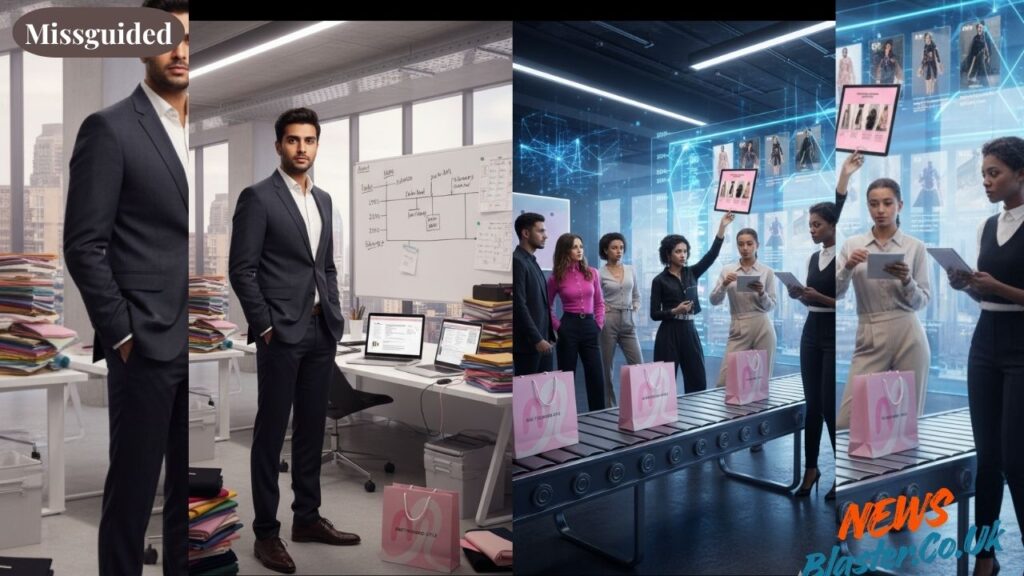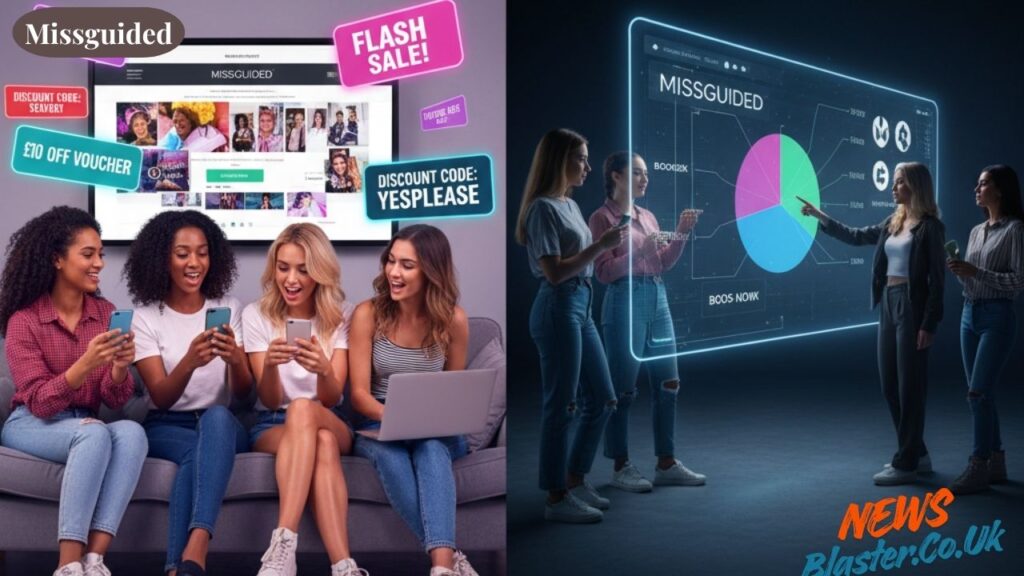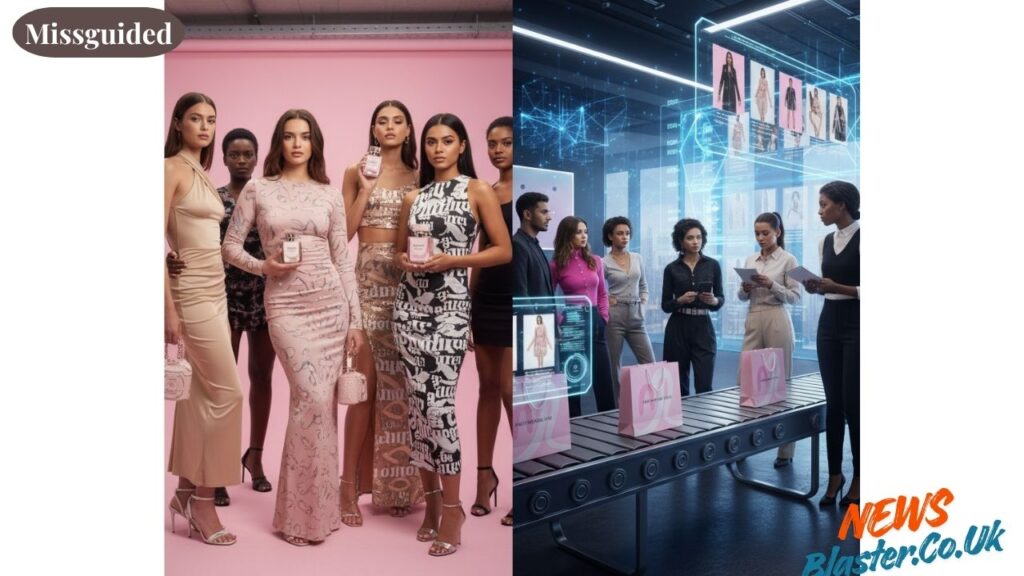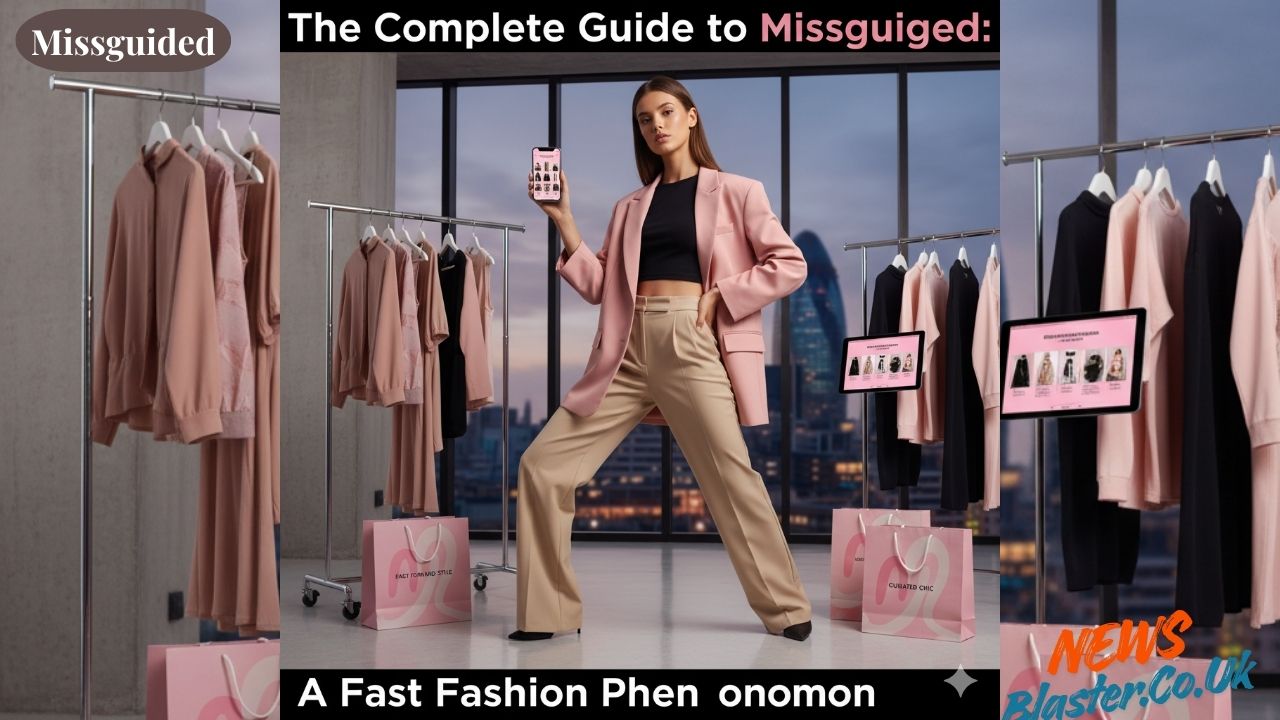Introduction to Missguided
Missguided has carved out a distinctive space in the competitive world of fast fashion, becoming a go-to destination for trend-conscious shoppers seeking affordable, on-trend pieces. The brand has built its reputation on delivering runway-inspired looks at accessible price points, appealing primarily to young women who want to stay ahead of fashion curves without breaking the bank.
Since its inception, Missguided UK has positioned itself as more than just another online retailer. The brand embodies a bold, confident attitude that resonates with its core demographic of women aged 16-35. Through strategic marketing and a finger-on-the-pulse approach to trends, the company has developed a loyal following that spans across multiple countries.
The evolution of Missguided reflects broader shifts in how consumers shop for fashion. By embracing e-commerce early and leveraging social media platforms effectively, the brand has grown from a small Manchester startup into an internationally recognized name in the fast fashion sector.
Brand Background & History

The Missguided story began in 2009 when entrepreneur Nitin Passi founded the company in Manchester, UK. Starting with a clear vision to democratize fashion and make trend-led clothing accessible to everyone, Passi recognized an opportunity in the rapidly growing online fashion market. His approach centered on speed, affordability, and style—three pillars that would define the brand’s identity.
During its early years, the company experienced remarkable growth, expanding its product range and reaching new markets. The brand’s digital-first strategy allowed it to respond quickly to emerging trends, often bringing new styles from concept to customer in a matter of weeks. This agility became one of Missguided’s defining characteristics.
Throughout the 2010s, the brand achieved several significant milestones, including opening physical retail spaces and expanding its international presence. The company’s ability to tap into youth culture and translate runway trends into affordable pieces helped it compete against established players in the market.
Business Model & Market Position

Missguided operates on a classic fast fashion model, prioritizing rapid production cycles and trend replication. The brand’s strategy revolves around identifying emerging styles quickly and delivering them to consumers at competitive prices. This approach allows shoppers to access fashion-forward pieces without premium price tags.
The pricing strategy has always been a cornerstone of the brand’s appeal. By offering regular promotions, including Missguided discount code opportunities and seasonal sales, the company maintains its value proposition. Customers can often find a Missguided discount code on sale items, making already affordable pieces even more budget-friendly. The availability of a Missguided offer code or Missguided discount voucher further enhances the shopping experience for price-conscious consumers.
The e-commerce focus has been central to the brand’s identity from day one. Unlike traditional retailers that transitioned online, Missguided was built for the digital age, with its website and mobile app serving as primary shopping channels. This digital-native approach allowed the company to minimize overhead costs and pass savings on to customers.
In the competitive landscape, the brand faces stiff competition from similar players like Boohoo, ASOS, and PrettyLittleThing. Each of these retailers targets similar demographics and employs comparable strategies, making differentiation crucial. The brand has worked to distinguish itself through distinctive marketing campaigns and its signature bold aesthetic.
Product Range & Offerings

The product catalog spans multiple categories, with particular strength in women’s clothing. From casual everyday wear to statement party outfits, the range caters to diverse style preferences and occasions. Missguided dresses represent one of the brand’s most popular categories, featuring everything from bodycon styles to flowing maxi designs.
Beyond apparel, the brand has expanded into lifestyle products. Missguided perfume launched as part of the company’s diversification strategy, allowing fans to embrace the brand beyond their wardrobe. The fragrance line reflects the same confident, bold personality that defines the clothing collections.
The Missguided Babe Power collection deserves special mention as it embodies the brand’s empowerment messaging. This range features bold graphics, statement pieces, and designs that celebrate confidence and individuality. The collection has resonated particularly well with the brand’s core audience, becoming a signature offering.
Collaborations and limited editions have also played a significant role in generating excitement. By partnering with influencers, celebrities, and other brands, the company creates exclusive pieces that drive urgency and engagement among its customer base.
Size inclusivity has evolved over time, with the brand expanding its range to cater to more body types. This shift reflects broader industry movements toward representation and accessibility in fashion.
Marketing & Brand Strategy
Social media has been instrumental in building the brand’s presence. Platforms like Instagram, TikTok, and Twitter serve as primary channels for showcasing new arrivals, sharing styling inspiration, and engaging directly with customers. The visual nature of these platforms aligns perfectly with fashion retail, allowing the brand to create aspirational content.
Influencer partnerships form a crucial component of the marketing strategy. By collaborating with content creators who embody the brand’s aesthetic, the company reaches engaged audiences authentically. These partnerships often include discount code promotions, giving followers incentive to shop while providing the brand with trackable marketing metrics.
Celebrity collaborations have generated significant buzz over the years. High-profile partnerships create media attention and lend credibility, helping the brand punch above its weight in terms of cultural relevance.
The brand messaging emphasizes confidence, individuality, and accessibility. Marketing campaigns often feature diverse models and celebrate different expressions of style, aligning with contemporary values around representation.
Challenges & Controversies
Like many fast fashion retailers, the brand has faced criticism regarding sustainability. The rapid production cycles and trend-driven model raise questions about environmental impact, waste, and resource consumption. As consumer awareness around these issues grows, fast fashion brands increasingly face pressure to address their environmental footprint.
Labor practices and ethical production have also drawn scrutiny. Questions about factory conditions, worker wages, and supply chain transparency affect the entire fast fashion sector, and the brand has not been immune to these concerns.
Advertising controversies have occasionally put the company in the spotlight for the wrong reasons. Debates around body image representation, appropriate advertising content, and messaging choices have sparked discussions about the brand’s social responsibility.
Environmental impact remains an ongoing challenge. The fashion industry’s contribution to pollution, water usage, and textile waste has become a central concern for conscious consumers, pushing brands to reconsider their operational models.
Recent Developments
The brand faced significant financial difficulties culminating in administration in 2022. Rising costs, changing consumer behaviors, and increased competition contributed to the company’s struggles. The administration process marked a turning point in the brand’s journey.
Frasers Group, the retail conglomerate owned by Mike Ashley, acquired the brand out of administration. This acquisition provided stability and resources but also signaled a new chapter in the company’s story. Under new ownership, the brand has worked to restructure operations and stabilize its position.
Current operations continue under the Frasers Group umbrella, with the brand maintaining its online presence and continuing to serve customers. The Missguided returns policy remains in place, allowing customers to send back items that don’t meet expectations, which is crucial for online retail success.
The future direction involves balancing the brand’s heritage with necessary evolution. Rebranding efforts focus on maintaining the core identity that attracted customers initially while adapting to changing market conditions and consumer expectations.
Consumer Perspective
Customer feedback reveals mixed experiences. Many shoppers appreciate the affordability and trend-led offerings, praising the brand for making fashion accessible. The ability to find styles similar to high-end pieces at fraction of prices resonates strongly with budget-conscious consumers.
The shopping experience centers primarily around the online platform. Website navigation, product photography, sizing information, and checkout processes all contribute to customer satisfaction. The ease of applying a Missguided discount voucher during checkout enhances the overall experience.
Quality versus price considerations feature prominently in reviews. Some customers accept that lower prices may mean shorter garment lifespans, viewing purchases as short-term fashion investments. Others express frustration when items don’t meet quality expectations.
The Missguided returns process plays a crucial role in customer confidence. Clear return policies and straightforward procedures help mitigate concerns about ordering clothing online without trying it first. The ability to return items that don’t fit or meet expectations reduces purchase risk.
Brand loyalty varies significantly. Some shoppers return regularly, drawn by consistent new arrivals and promotional offers. Others shop more sporadically, comparing options across multiple retailers before making purchase decisions.
Conclusion
The current state of Missguided reflects both the opportunities and challenges inherent in fast fashion retail. Under new ownership, the brand works to maintain relevance in an increasingly competitive and scrutinized market. The company’s digital heritage and understanding of its target audience remain valuable assets.
Looking forward, the brand faces questions about how to balance its core fast fashion model with growing demands for sustainability and ethical practices. Consumer expectations continue evolving, and successful fashion retailers must adapt accordingly.
The lessons from Missguided’s journey extend beyond this single brand. The story illustrates how quickly fashion retail can change, the importance of financial sustainability alongside growth, and the need to continually evolve with consumer values. Whether shopping for Missguided dresses, exploring the Missguided Babe Power collection, or searching for a Missguided offer code, customers engage with a brand that represents a particular moment in fashion retail history—one that continues to unfold.
Also Read: FatFace A Complete Guide to the British Lifestyle Brand

